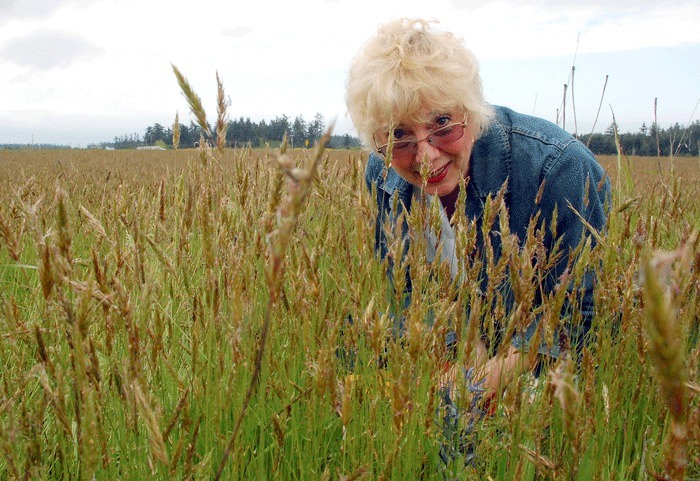Island Transit expects to spend more than $1 million on a transit park, roadway safety improvements, and preserving native plant species on a project just east of Coupeville.
Located on the 3.2-acre island of property surrounded by Highway 20, and Smith Prairie and Parker roads, the project will see the construction of a bicycle-centric transit park. It will double as a gateway for Smith Prairie and a preserve for a population of relic prairie plants.
Transit officials also hope to make the traffic triangle safer with a street realignment by closing two intersections and building a third, as well as constructing a second entrance to the organization’s adjacent headquarters along Highway 20.
The project is tied to the transportation agency’s larger plan to replace its existing administrative building and maintenance bay with a new $22.4 million facility. Organization officials have been seeking funding for both projects for nearly a decade.
Recently, Island Transit leaders were informed that $896,000 from this year’s state transportation budget had been reserved for the transit park and road improvements. It was an unexpected, albeit welcome, surprise.
“We’re really tickled the state was able to come up with funding for this,” said Bob Clay, chairman of the transit agency’s board of directors.
Although Island Transit had specifically applied for the money, no one really expected the request to get past the cash-strapped Legislature. Even Island Transit Director Martha Rose expressed amazement.
“I gotta tell you I was shocked when I got the call,” Rose said.
No doubt, municipalities and junior taxing districts from across the state made funding requests of their own this year but most were likely scrubbed due to the state’s continuing financial crisis. Rose credited Sen. Mary Margaret Haugen, D-Camano and chairwoman of the Senate Transportation Committee, with the allocation.
According to Clay, the project got its start years ago out of a desire for a second entrance to Island Transit’s headquarters just north of the traffic triangle. Initially, the prospect looked unfeasible as the cost of a direct entrance off Highway 20 ran in the millions of dollars, he said.
It was decided that the vacant property would better suit their purposes and could likely be done more affordably, he said. When the property recently came up for sale the board moved quickly, buying it for $120,000 from Countryside Inn owner Louise Harvey.
The remaining $896,000 from the state will be spent on the transit park and road configuration. Most of that will go toward realigning the two intersections, Rose said. The ends of Parker and Smith Prairie roads will be closed and replaced by a new intersection, located in the middle of the 90-degree turn in Highway 20.
What’s left of Smith Prairie Road will be diverted and used as the second entrance into Island Transit’s facility.
It’s hoped the intersection realignment will offer drivers a better line of sight for vehicles getting on the highway and improve overall safety, especially at Parker Road. Transit officials called it “notoriously dangerous.”
According to statistics from the state Department of Transportation, 13 accidents, involving 28 vehicles, have occurred on that section of highway since 2001. They resulted in at least 17 reported injuries.
“We’re going to redo the whole thing,” Clay said.
As for the transit park, it will be designed with bicycles in mind though there will be limited space for parking, Rose said.
The transit agency’s comprehensive plan calls for several new transit parks: one at Deception Pass and another at a yet-to-be-determined North Whidbey site, one near Race Road and another just north of Freeland. A large transit park in Coupeville on South Main Street, Prairie Station, has already been built.
The new transit park will also serve as a gateway for Smith Prairie, a plan that coincidentally aligns with long-range plans developed by Ebey’s Landing National Historical Reserve’s Trust Board. An informational kiosk, such as the one at Prairie Station off South Main Street in Coupeville, will be constructed along with interpretive signage.
Finally, Smith Prairie is home to some of the last remaining populations of native Whidbey plants and the park will be designed in such a way to protect the relic vegetation. It’s so important, Rose said the final designs and construction timeline will depend largely on the plants.
Given the shape of the economy, Rose said she won’t be surprised if there is some push back about a transportation project that puts so much focus on the protection of native plant species. However, she said working to preserve something that could be lost forever would be worth a battle.
“As far as I’m concerned, bring it on,” Rose said.



